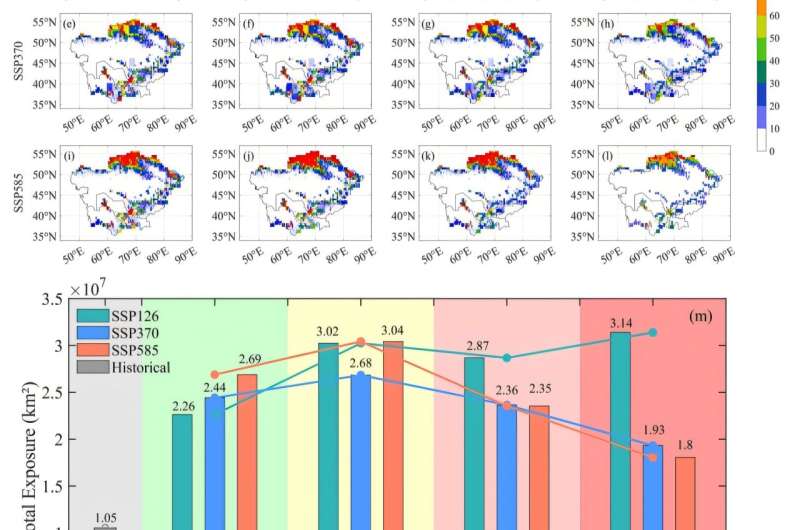
A study led by Prof. Bao Anming from the Institute of Xinjiang Ecology and Geography (XIEG) of the Chinese Academy of Sciences reveals a significant increase in heat wave exposure across Central Asia’s croplands by the end of the 21st century.
Recently published in Earth’s Future, the study examines the effects of heat waves on cropland in Central Asia and predicts future risks under three Shared Socioeconomic Pathways (SSPs), highlighting a worrying outlook for the region’s agriculture.
The researchers find that, with moderate (SSP370) and high (SSP585) greenhouse gas emission scenarios, the total cropland area exposed to heat waves is set to increase by 852% and 1143%, respectively, compared to the historical period (1995–2014). This sharp rise underscores the growing threat of climate change to agriculture in the area.
The study identifies Northern Kazakhstan as the most vulnerable region, with parts of Southeast Central Asia also facing significant risks. Cropland areas at risk of heat waves show a clear pattern of intensification and expansion across Central Asia.
An important finding from the research is that climate change and changes in land use patterns are the main contributors to increased heat wave exposure, accounting for more than half of the projected impact.
This study provides valuable information for policymakers aiming to develop effective strategies to protect Central Asia’s crucial agricultural sector.
For more information:
Tao Li et al, Historical and Projected Cropland Impacts of Heatwaves in Central Asia Under Climate Change, Earth’s Future (2025). DOI: 10.1029/2024EF005595

